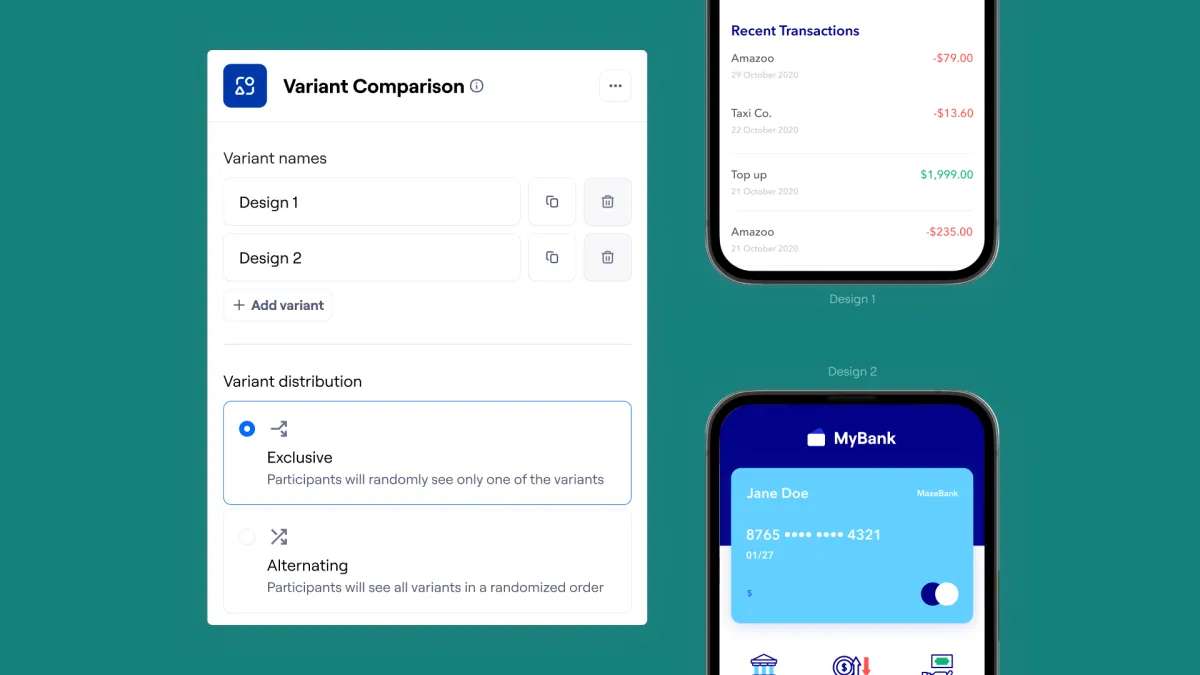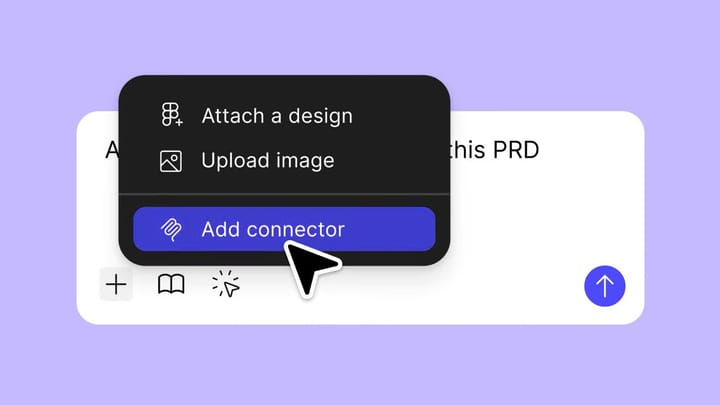Enhanced design evaluation with Variant Comparison in Maze
The Variant Comparison block streamlines the process of identifying optimal designs through efficient testing and comparative analysis.

The Variant Comparison Block is a new feature designed to enhance design iteration and selection. It facilitates the creation and testing of multiple design variations within a single maze environment. This allows for efficient comparison of results, enabling users to identify the optimal design solution.
video: maze.co
Variant Comparison Approaches: Versioning vs. Multivariate Testing
The Variant Comparison Block facilitates two primary approaches to variant comparison:
- Versioning: This approach is ideal for evaluating entirely distinct design versions. For example, versioning can be used to assess which user flow offers the most intuitive experience for participants.
- Multivariate testing: In contrast, multivariate testing focuses on comparing variations within a single design element. This approach might be used to determine which color scheme or call to action (CTA) copy elicits the strongest user response.
Variant allocation strategies: Exclusive vs. Alternating exposure
The Variant Comparison Block offers two primary strategies for allocating users, or exposing them to different design variations:
- Exclusive comparison: This approach assigns each participant to a single design version. In the field of product research, this method may also be referred to as monadic, between-subjects, or between-groups testing.
- Alternating comparison: In contrast, alternating comparison exposes all participants to both design variations, but in a randomized order. This strategy is also known as sequential, within-subjects, within-groups, or consecutive testing.
The Variant Comparison Block comprises multiple groups of blocks named variants. Each variant is configurable with a blend of blocks to enable diverse tests demonstrating various designs and supporting questions. A maximum of five variants can be integrated into a single Variant Comparison Block.
The results of all variants can be viewed side-by-side. As all variants are integrated within a single maze, responses for each can be observed in one location or exported as a comprehensive CSV file for thorough analysis.



